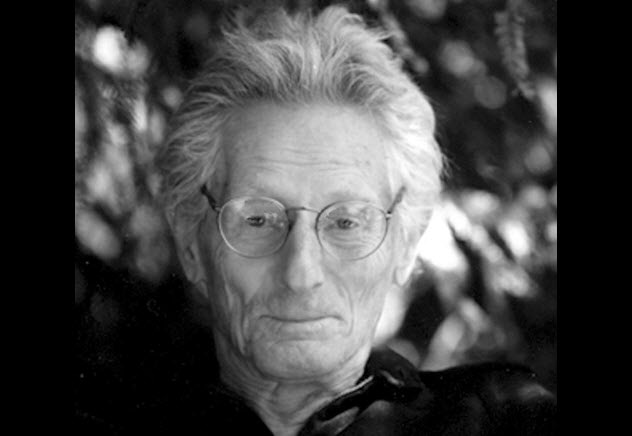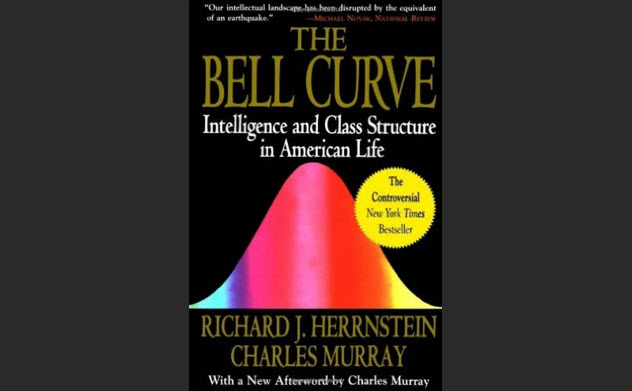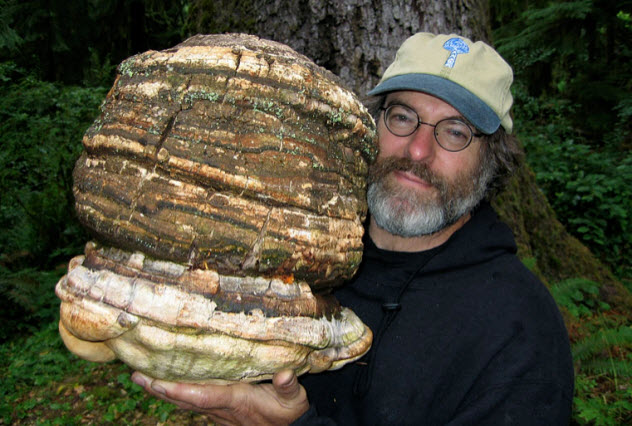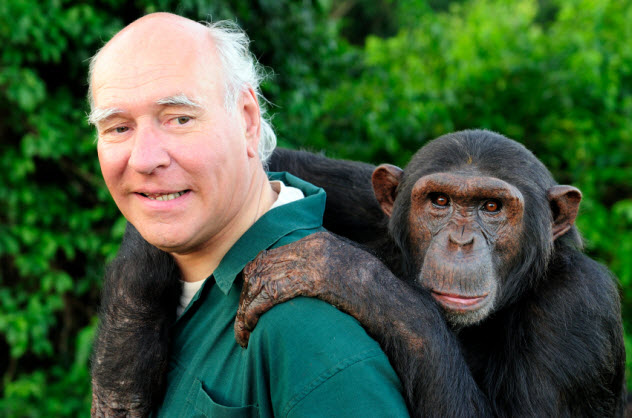 Mysteries
Mysteries  Mysteries
Mysteries  History
History 10 Surprising Stories About the Texas Rangers
 Humans
Humans 10 Philosophers Who Were Driven Mad by Their Own Theories
 Miscellaneous
Miscellaneous 10 Video-Game-Worthy Weapons and Armors from History
 Weird Stuff
Weird Stuff 10 Psychics Who Accurately Predicted Wartime Events
 The Arts
The Arts 10 Pieces of Art Inspired by a Broken Heart
 Health
Health 10 Science Fiction-Sounding New Medical Treatments
 History
History 10 Surprising Facts About the Father of Submarine Warfare
 Space
Space Ten Astonishing New Insights into Alien Worlds
 Weird Stuff
Weird Stuff 10 Bizarre Summer Solstice Rituals Still Practiced Today
 Mysteries
Mysteries Top 10 Haunting Facts About the Ghost Ship MV Alta
 History
History 10 Surprising Stories About the Texas Rangers
 Humans
Humans 10 Philosophers Who Were Driven Mad by Their Own Theories
Who's Behind Listverse?

Jamie Frater
Head Editor
Jamie founded Listverse due to an insatiable desire to share fascinating, obscure, and bizarre facts. He has been a guest speaker on numerous national radio and television stations and is a five time published author.
More About Us Miscellaneous
Miscellaneous 10 Video-Game-Worthy Weapons and Armors from History
 Weird Stuff
Weird Stuff 10 Psychics Who Accurately Predicted Wartime Events
 The Arts
The Arts 10 Pieces of Art Inspired by a Broken Heart
 Health
Health 10 Science Fiction-Sounding New Medical Treatments
 History
History 10 Surprising Facts About the Father of Submarine Warfare
 Space
Space Ten Astonishing New Insights into Alien Worlds
 Weird Stuff
Weird Stuff 10 Bizarre Summer Solstice Rituals Still Practiced Today
10 Of History’s Most Bizarre And Controversial Biologists
The field of biology has always been rife with mavericks. Some of them have proven to be genuine revolutionaries in their respective fields. Others are just plain odd or even sadistic.
10 Harry Harlow

Professor Harry F. Harlow (1905–1981) was a primatologist and psychologist who garnered international infamy for his developmental studies on infant monkeys. Although his research was scientifically sound, it was undertaken with bizarre methodologies that involved incredibly offensive terminology.
After separating baby rhesus macaques from their mothers, Harlow raised the babies in captivity with mechanical surrogate mothers that could dispense milk. He proved that tactile stimulation and cuddling were essential for normal development by comparing the behaviors of monkeys “raised” by cuddly cloth doll mothers against those whose mothers were constructed of cold, hard wire.
Harlow frightened his test subjects using a drumbeating teddy bear. The babies raised by cloth dolls retreated to their “mothers” for comfort and quickly calmed down while cuddling. Conversely, the babies of wire “mothers” became hysterical, clutching themselves and rolling around on the floor in terror. They exhibited behavior similar to autistic human children or asylum patients.
Harlow also created various mechanical “monster” mothers for his subjects. These monsters would hurl the babies away physically and blast them with compressed air. The “iron maiden” mother would even hurt the babies with projected metal spikes.
In another cruel experiment, Harlow placed his subjects in “pits of despair,” where the baby monkeys had no contact with any external stimuli for months at a time. Harlow’s collaborator, Stephen Suomi, later admitted that this project gave him nightmares.
Of particular notoriety was Harlow’s “rape rack.” After subjecting certain female monkeys to the pits of despair, Harlow would tie these psychologically ruined, unwilling females (which he called “bitches”) to a rape rack to force them to have sex. Supposedly, his goal was to study the development of the child of an antisocial, “living monster” mother.
Some of Harlow’s “bitches” killed their babies, chewed off their fingers, or starved them to death. But their babies kept returning, still desperately seeking maternal affection.
9 George Price
Dr. George R. Price (1922–1975) was a population geneticist whose work on game theory and altruism has proved extremely influential in behavioral ecology. Price refined an existing mathematical equation that explored altruistic behavior within a population. He even described how it could commonly occur among extremely selfish, unrelated individuals.
Disgusted at the implications this had for human nature and ethics, Price dedicated his life to proving that true altruism could exist in the absence of genetic selfishness. He spent increasing amounts of time with the homeless and the destitute. He invited violent and abusive alcoholics into his living spaces and gave them all his material wealth.
Eventually, he was unable even to wear a cross to church. People had repeatedly asked for his crosses as gifts. He felt obliged to give away the last seven, and he could no longer afford to buy one.
Price became steadily mired in self-doubt as he began to suspect that his altruistic efforts served only to offer people false hope. Eventually, Price succumbed to abject despair and committed suicide in London with a pair of scissors.
8 John Lilly

Dr. John C. Lilly (1915–2001) was probably the most controversial and bizarre figure in the history of marine biology. He ran a research facility in the US Virgin Islands that housed bottle-nosed dolphins. There, he explored their cognitive and language abilities.
In 1960, Lilly predicted that dolphins would be able to master human speech with their blowholes within 20 years. He became convinced that they had the potential to communicate with extraterrestrials because their communication involved “a form of telepathy.”
During the 1960s, Lilly was a regular user of LSD, which he often took for bizarre personal experiments with a sensory deprivation tank. By 1965, Lilly professed to have abandoned the concept of objectivity in his scientific studies.
He had an exceptionally rapid staff turnover because his researchers grew frightened of interacting with the dolphins underwater. His most notorious experiment involved flooding a house with water in 1965 and then using it as an interactive cohabitation enclosure. His 23-year-old assistant, Margaret Howe, lived there in isolation with Peter, a dolphin test subject, and attempted to teach him to talk.
After five weeks of mounting tension, Peter became increasingly aggressive and showed sexual arousal during their play. To focus Peter on his studies, Howe resorted to sexually relieving him through masturbation. She later described their budding relationship this way: “It was sexual on his part. It was not sexual on mine. Sensual, perhaps.”
In 1967, Lilly began injecting his test subjects with LSD, initially using dolphins removed from the water. They showed heightened fear and agitation and increased respiration and heart rate. One of his test subjects, previously wary of humans, underwent a permanent behavioral shift while dosed with LSD. The dolphin became socially interactive with Lilly’s team.
Lilly’s scientific credibility and access to funding rapidly declined, and his work besmirched the legitimacy of dolphin cognitive science for decades. Three of his test subjects were released back into the ocean. The other five died of neglect.
7 Sergei Brukhonenko

Professor Sergei S. Brukhonenko (1890–1960) was a Soviet-era Russian surgeon who developed an apparatus called the “autojector” in 1925 to maintain the function of isolated body organs. He deployed it in 1926 to keep a dog with no lungs or heart alive for two hours. He used external blood circulation and oxygenation with a pair of donor lungs that were connected to the subject via rubber tubes and pumps.
In May 1926, Brukhonenko succeeded at keeping a decapitated dog’s head alive for one hour and 40 minutes. Later, international demonstrations showed a decapitated dog responding actively to its surroundings and even swallowing a piece of cheese.
During this time, Brukhonenko began studying the neurological effects of different chemicals used in the procedure as well as the impacts of death and revival. The Soviet public was intrigued by Brukhonenko’s work, with newspaper reports claiming that he could keep heads alive for up to 24 hours. He received considerable support from various state agencies for his research.
Brukhonenko’s disturbing experiments even caused waves in Europe. Playwright George Bernard Shaw wrote a letter speculating about whether these devices could be used to “preserve human knowledge” by severing the heads of dying scientists. Shaw wondered if their brains could continue to benefit society via disembodied lectures. He even publicly expressed the desire to undergo the process himself.
6 Richard Herrnstein

Professor Richard Herrnstein (1930–1994) was a specialist in animal behavior. His assertion that intelligence is mostly heritable earned widespread opposition from left-wing academics.
In a 1971 article, Herrnstein claimed that trying to achieve equality in society would fail to address the gaps in performance between people of different genetic abilities. He believed that society was locked in biological castes of different levels of intellect.
Although he denied being a biological racist, Herrnstein drew heavily from the psychological studies of Arthur Jensen, who had overtly stated that differences in academic performance between races were due to genetics. Herrnstein’s lectures were subsequently targeted by widespread protests during the 1970s.
In 1994, he coauthored The Bell Curve with Charles Murray. The book explicitly discussed the differences in academic performance in the US among black, white, and Asian students. Then the authors attributed this disparity to genetic factors while refuting that there were any inherent racial biases in IQ testing.
The Bell Curve made the case for a genetic cognitive elite within US society who hold the most prestigious positions and earn the highest incomes. The authors also recommended IQ testing as a valid tool for employee recruitment. They also believed that children of low-IQ mothers should be adopted to raise societal IQ levels.
Herrnstein’s work was broadly criticized for its sweeping generalizations, poor statistical analysis, and highly contestable assumptions.
5 Randy Thornhill

Evolutionary biologist Randy Thornhill made international waves when he coauthored a book with anthropologist Craig Palmer in 2000. It was entitled A Natural History of Rape: Biological Bases of Sexual Coercion.
Thornhill began exploring the biology of forced copulations through the study of scorpionflies. He believes that the male mating claws of these animals serve no biological function beyond committing rape.
Thornhill asserts that rape is predominantly motivated by sexual desire and is a natural biological phenomenon that has been present throughout human evolution. He claims that it evolved “just as surely as the spots on a leopard or the long neck on a giraffe.”
According to Thornhill and Palmer, biological differences cause men to seek casual sex from multiple partners and women to seek sex from successful men who are best able to support their offspring.
Their work directly criticized societal rape prevention measures as ineffective because those measures fail to take this biological imperative into account. Thornhill and Palmer said that females choosing to dress and act in ways deemed sexually “provocative” are putting themselves at increased risk of rape.
His ideas were broadly criticized by his peers, especially due to a perceived lack of empirical data. Thornhill’s conclusions have since fallen into question due to an accumulation of contrary findings.
4 Paul Stamets

Dr. Paul Stamets is currently the world’s foremost mycologist. His revolutionary, unorthodox approach to fungi and his novel ideas for their practical application in just about everything have brought him international acclaim.
According to Stamets, mycelial networks shield forest animals from pathogens. But the sterile nature of modern urban life has removed us from this powerful natural buffer against disease.
Stamets is open about the fact that his recreational psilocybin use changed his life. It gave him a newfound confidence by helping him to overcome a chronic stutter. Stamets believes that psilocybin stimulates neuron growth in the brain. He literally describes himself as a “mycelial messenger.”
His overt support for recreational psilocybin use has put him at odds with more traditional and orthodox mycologists. His intimate knowledge of mycelial networks and their intersections with nature have led him to stop considering people as autonomous independent beings. Instead, he views people as linked streams of molecules with temporary consciousness.
Stamets even considers Earth’s mycelial networks as intelligent beings, corresponding to a cosmic ordering of matter echoed by dark matter strings across the universe. He cites studies showing that fungi predictively grow mycelia according to complex models of mathematical optimization.
He is currently working on a nanocomputer utilizing mycelia.
3 Morris Goodman

Dr. Morris Goodman (1925–2010) was a molecular anthropologist whose groundbreaking work on primates gave scientists a more detailed understanding of the cladistic relationships and divergence intervals between different hominids.
He is most famous for advancing the inflammatory, neo-Darwinist idea that humans and chimpanzees are too closely related to belong to separate genera. In 1962, Goodman controversially proposed at a New York Academy of Sciences meeting that chimpanzees and gorillas should be reclassified as humans and scientifically renamed as members of genus Homo. He based this proposal upon his molecular studies of blood proteins.
His ideas were rebuffed as radical misanthropy by his mainstream contemporaries. However, Goodman’s newfound understanding of the closeness between the different great apes led him to refute the idea that humans held any kind of grand significance. He believed that Homo sapiens will probably collectively bite the dust one day, just like any other animal.
In 2003, Goodman’s genetic work showed that humans and chimpanzees share 99.4 percent of the most critical gene sites in their corresponding genes, a finding that he used to bolster his position that humans and chimps belong in the same genus.
2 Rob Dunn
Professor Robert Dunn wants a reappraisal of parasites and their roles in human health and Holocene ecology. A core tenet of his “hygiene hypothesis” is that modern urban living for humans consists of sterile living environments with poor biodiversity. Our resulting lack of exposure to endoparasites, such as gut worms, and diverse bacterial communities is negatively affecting our health, including a boom in allergies.
He argues that the human immune system has coevolved with the parasites that we seek to eradicate. Specifically, he suggests that gut worms play a regulatory role in the human immune system and that our immune systems are too sensitive without them.
Dunn believes that human revulsion is an evolutionary adaptation against exposure to pathogens and parasites but one that is poorly balanced in our modern world. Supposedly, this leads to negative sociological impacts—such as shunning the elderly and the obese—and a tendency toward xenophobic tribalism.
He is concerned about the ongoing silent extinctions of parasitic species and the potential impacts that could result. In particular, he points out that some parasites, such as lice, are more host-specific than others, such as ticks.
As the host-specific parasites die out, they are creating new niches for more generalist parasites to exploit. This increases the risk of human exposure to new diseases from animals that are spread by shared parasites.
1 Charles Cockell
The professional background of Charles S. Cockell, director of the UK Center for Astrobiology, lies predominantly in microbiology. Cockell loves microorganisms. In fact, he is the world’s leading proponent of microbial rights and conservation.
Cockell famously asked, “Do microbes have intrinsic value?”
He believes that deliberately causing any species to become extinct is an ethical problem. In his view, this logically extends to viruses, bacteria, and maybe even artificially synthesized microbes.
Cockell maintains that microorganisms are ignored by conservationists for purely anthropocentric and aesthetic reasons that aren’t scientifically defensible. He points out that existing biodiversity legislation often explicitly excludes microbial life for no reason beyond convenience.
According to Cockell, contaminated sites that can no longer support animals and plant life may be valuable because they host rare microbial communities. He believes that restoring these environments for animals and plants is inappropriate if it causes a significant loss of microbial biodiversity.
Cockell also advocates the preservation of unharmful algal and bacterial communities growing on the walls of public buildings, which he says are habitually destroyed due to ignorant, aesthetic ideals of “cleanliness.”
Microbial ethics is nothing new, though. Cockell’s work is heavily influenced by that of Bernard Dixon, who famously raised ethical questions in 1976 about the willful eradication of the smallpox virus.
Graham Jury spent a childhood in destitution after Richard Dawkins stole his father’s job at the logging mill. He currently works as a nine-year-old chimney sweep in Victorian London. Email him at [email protected].








